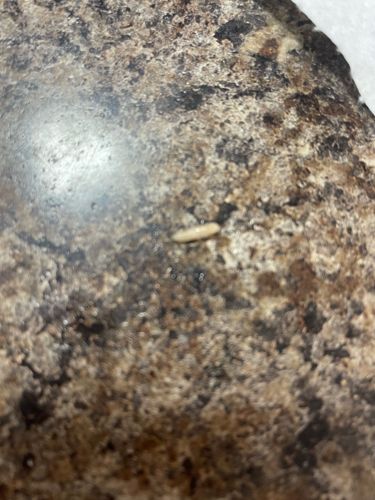Maggot (Fly Larva)
Scientific Name: Varies depending on species of fly (e.g., Lucilia sericata for common green bottle fly)
Order & Family: Order: Diptera (True Flies), Family: Varies widely (e.g., Calliphoridae for blow flies, Muscidae for house flies)
Size: Typically 3mm to 25mm (0.12 to 1 inch) depending on the species and developmental stage.

Natural Habitat
Found in decaying organic matter such as rotting food, carrion, manure, garbage, and sometimes living tissue (in cases of myiasis).
Diet & Feeding
Feeds on decaying organic matter, including rotting flesh, fruits, vegetables, and garbage. Some species are parasitic and feed on the tissues of living animals.
Behavior Patterns
Larval stage of a fly. They are legless, soft-bodied, and typically white or yellowish. They burrow into their food source, consuming it rapidly to grow before pupating. They are often found in clusters and move by contracting and expanding their bodies. Their presence indicates a source of decaying organic material nearby.
Risks & Benefits
Risks: Can be pests in homes and food establishments, indicating poor sanitation. Some species cause myiasis (infestation of living tissue) in humans and animals, which can lead to discomfort, infection, and tissue damage. Benefits: Maggots play a crucial role in decomposition, breaking down dead organic matter and recycling nutrients. Medical maggots (sterilized larvae of specific species) are used in maggot therapy to clean chronic wounds by consuming dead tissue and reducing bacteria.
Identified on: 9/18/2025